As a new calendar year approaches, many of us will participate in new year’s resolutions - that time-honored cultural tradition in which we collectively and individually resolve to change an undesired trait or behavior, accomplish a personal goal or otherwise improve our lives.
In schools, we tend to do similar annual cathartic activities in the summer. Educators typically take the summer to expand their professional skills, make new plans, pilot new technologies or resources - ultimately embark on a reflective journey about making the next school year more creative, engaging and successful.
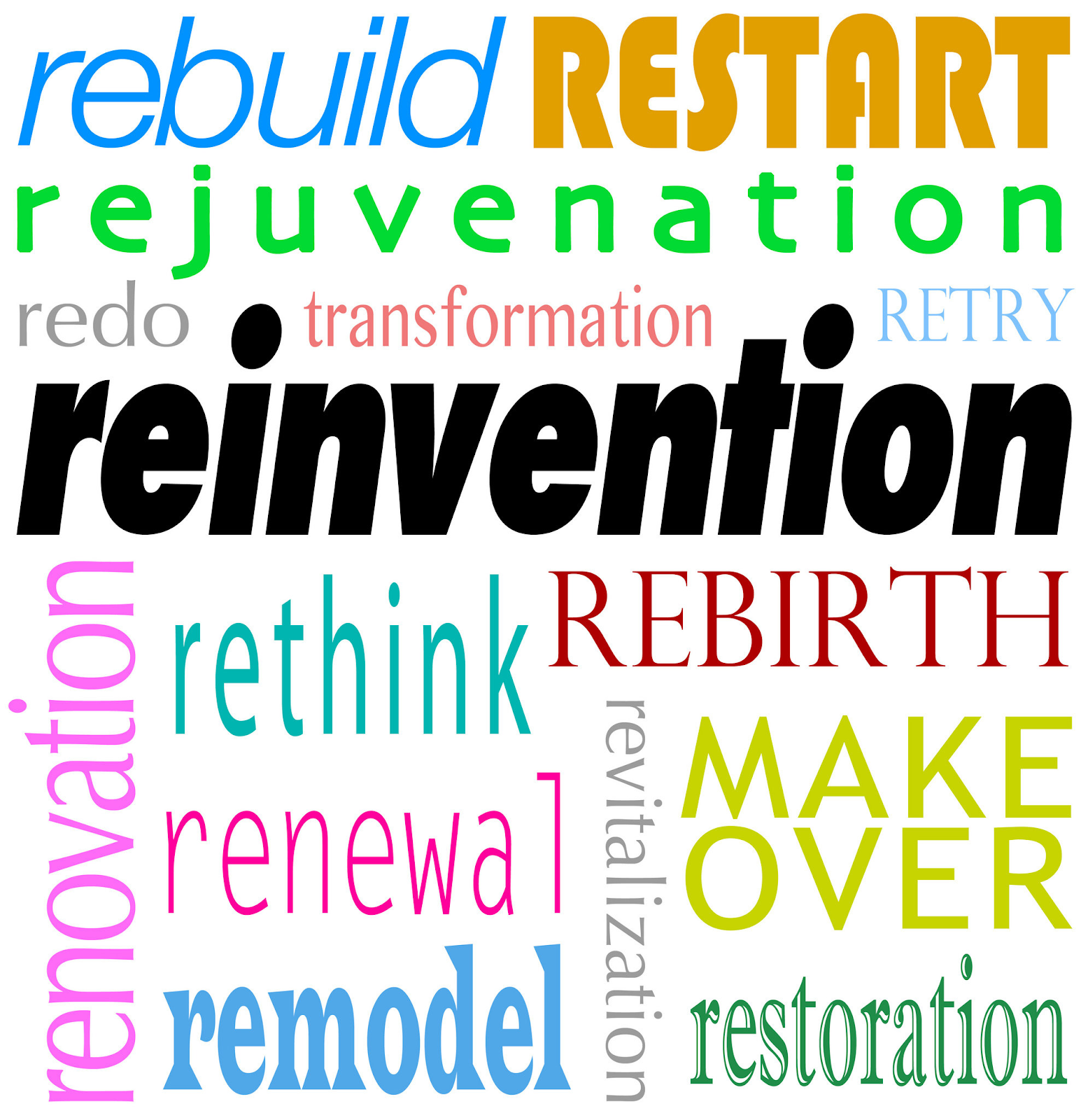 What if we combined the annual reflective journey of summer with the resolutions associated with the new calendar year? This would become a mid-year reboot, restart, redo or redesign? Instead of waiting until next summer, let’s in January (or even before Winter Break here at the end of 2018), one could implement a new strategy, tool or idea. This could be a classroom redesign, a large and new full scale project or trying something one has always wanted to do. If any idea one has may have the potential to positively transform the educational terrain for even one student, then January could be much better than August.
What if we combined the annual reflective journey of summer with the resolutions associated with the new calendar year? This would become a mid-year reboot, restart, redo or redesign? Instead of waiting until next summer, let’s in January (or even before Winter Break here at the end of 2018), one could implement a new strategy, tool or idea. This could be a classroom redesign, a large and new full scale project or trying something one has always wanted to do. If any idea one has may have the potential to positively transform the educational terrain for even one student, then January could be much better than August.
Here are just a few ways to jump start a new school this mid-year:
Mini SmartStart
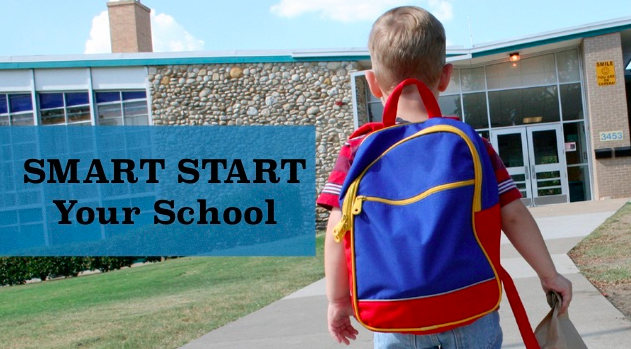 By now, many educators have realized that how they start the year dictates how the entire year develops. If we devote time the first days of school to culture building, relationships, goals, collaboration and community, we will probably optimize our students’ academic success instead of us just jumping right into academic work when school starts. A colleague of mine penned this effort, that we deployed successfully each year at our high school, as SmartStart. To read the entire SmartStart story, go to: https://www.gettingsmart.com/2018/07/smartstart-starting-school-year-right/
By now, many educators have realized that how they start the year dictates how the entire year develops. If we devote time the first days of school to culture building, relationships, goals, collaboration and community, we will probably optimize our students’ academic success instead of us just jumping right into academic work when school starts. A colleague of mine penned this effort, that we deployed successfully each year at our high school, as SmartStart. To read the entire SmartStart story, go to: https://www.gettingsmart.com/2018/07/smartstart-starting-school-year-right/
More and more teachers, educators and school sites are redesigning their first days of school. They have realized that if one builds culture first, instead of jumping into academics, students’ academic success can actually can actually be accelerated. For those that don’t buy into the idea of “culture eating everything for breakfast” mentality, then they will hopefully get on board one day. For those that do, and have been starting the year off differently each year, what if we pretended that mid-year was a whole new year. Whatever we did at the beginning of the year - relationship building, goal setting, community development, creativity, critical thinking, collaboration - isn’t it probably time to revisit these? Will our second half of the year be different, or even better, if we take the time to try a mid-year Mini SmartStart? Here are some Smart Start Resources.
Lame Duck Days - Intersessions
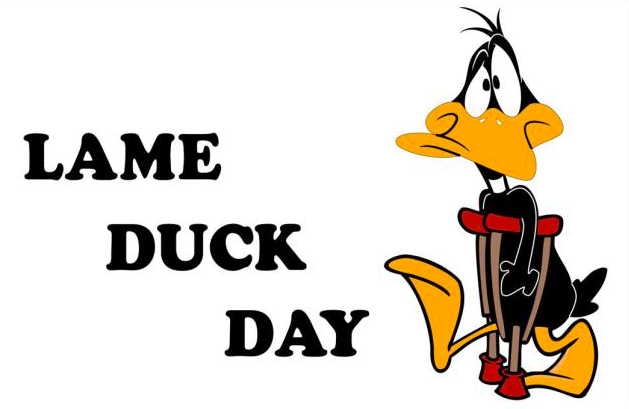 For me, this was initially inspired by the SmartStart model and successes. I continued to take our SmartStart philosophy to other aspects of the school year that needed a redesign or boost. For example, any day before a long vacation (Thanksgiving, Winter Break and Spring Break) became an opportunity to not only re-visit our school culture and climate priorities, but engage students in new ways through service learning or career activities that would be a departure from the typical class schedule and non-productive days before vacations. Even our year-end activities became giant celebrations of culture, performances and recognition - instead of the last day of school being another lost day. These final days before breaks are often now called Lame Duck Days. We turned them into SmartStart or SmartReboot days. These last days before vacations became giant intercessions where both teachers and students go to pursue specialized and unique topics, lessons, careers or volunteer work that was outside of their normal course and school work or experience. Remember, many colleges and private schools offer their students intersession experiences. Why don’t we? Here are some more resources on Lame Duck School Days.
For me, this was initially inspired by the SmartStart model and successes. I continued to take our SmartStart philosophy to other aspects of the school year that needed a redesign or boost. For example, any day before a long vacation (Thanksgiving, Winter Break and Spring Break) became an opportunity to not only re-visit our school culture and climate priorities, but engage students in new ways through service learning or career activities that would be a departure from the typical class schedule and non-productive days before vacations. Even our year-end activities became giant celebrations of culture, performances and recognition - instead of the last day of school being another lost day. These final days before breaks are often now called Lame Duck Days. We turned them into SmartStart or SmartReboot days. These last days before vacations became giant intercessions where both teachers and students go to pursue specialized and unique topics, lessons, careers or volunteer work that was outside of their normal course and school work or experience. Remember, many colleges and private schools offer their students intersession experiences. Why don’t we? Here are some more resources on Lame Duck School Days.
Redesign the Space
 Taking a closer look at our learning environments and spaces has become very popular. But it can’t be just about moving a few desks around or putting up some new generic posters. It has to be about redesigning space to optimize student engagement, collaboration, project work, classroom culture and ultimately learning. This can be challenging without some budget and more importantly vision. Maybe survey students before Winter Break to see what space they’d like to see when they return. If anything, that will demonstrate your interest in asking them and listen to them which might be even more powerful that the actual changes to the space. Meanwhile, just Google “Redesigning Learning Spaces” and you’ll see lots of pedagogy, rationale and ideas. If anything, focus on creating some flexible work spaces where students can design, create, collaborate and use technology. Think about space dedicated to conferences, coaching sessions and other feedback opportunities. Make one significant change for the return after Winter Break and then keep experimenting. Again, ultimately you can make this a class project where students have continuous input on redesign efforts. It’s a great Design Thinking activity or project. Maybe your first week back in January could something like this? http://bit.ly/ClassroomRedesignChallengeCopy
Taking a closer look at our learning environments and spaces has become very popular. But it can’t be just about moving a few desks around or putting up some new generic posters. It has to be about redesigning space to optimize student engagement, collaboration, project work, classroom culture and ultimately learning. This can be challenging without some budget and more importantly vision. Maybe survey students before Winter Break to see what space they’d like to see when they return. If anything, that will demonstrate your interest in asking them and listen to them which might be even more powerful that the actual changes to the space. Meanwhile, just Google “Redesigning Learning Spaces” and you’ll see lots of pedagogy, rationale and ideas. If anything, focus on creating some flexible work spaces where students can design, create, collaborate and use technology. Think about space dedicated to conferences, coaching sessions and other feedback opportunities. Make one significant change for the return after Winter Break and then keep experimenting. Again, ultimately you can make this a class project where students have continuous input on redesign efforts. It’s a great Design Thinking activity or project. Maybe your first week back in January could something like this? http://bit.ly/ClassroomRedesignChallengeCopy
New Year, New Tech
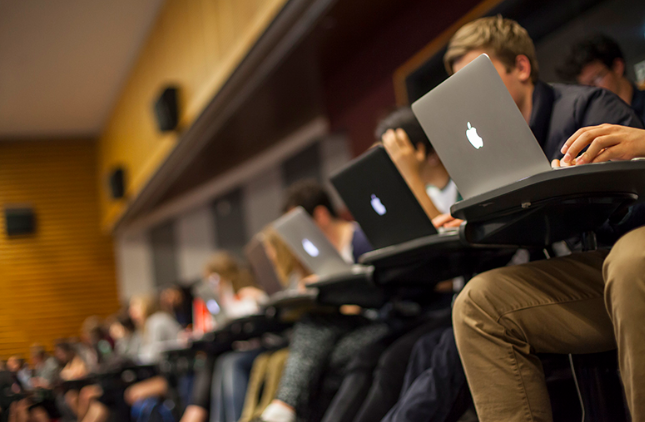 Maybe it could be adding one new tech tool, resource or application to a teacher’s repertoire and for the students’ engagement and learning. New technology resources come online seemingly daily. And yes, it’s hard to keep up. But if we chose one new one to learn and implement for the beginning of 2019? Often, we tend to dabble with technology. But this could be a resolution to truly implement and maximize your technology. Choose something that is free (like a web-based application) that both teacher and students can benefit from. Recently a teacher shared a fantastic one with me for anyone doing research, writing, presenting, etc. on various topics, issues and news items. It’s called All Sides (https://www.allsides.com). In an era of heated and divided political debate, and a new emphasis on information literacy, sites like this are great. It gives a conservative, liberal and neutral report on all events. This is more than info literacy, this might be part of the future of saving social interaction. Nonetheless, this is just one of thousands of examples of something we can implement and not wait until a new school year.
Maybe it could be adding one new tech tool, resource or application to a teacher’s repertoire and for the students’ engagement and learning. New technology resources come online seemingly daily. And yes, it’s hard to keep up. But if we chose one new one to learn and implement for the beginning of 2019? Often, we tend to dabble with technology. But this could be a resolution to truly implement and maximize your technology. Choose something that is free (like a web-based application) that both teacher and students can benefit from. Recently a teacher shared a fantastic one with me for anyone doing research, writing, presenting, etc. on various topics, issues and news items. It’s called All Sides (https://www.allsides.com). In an era of heated and divided political debate, and a new emphasis on information literacy, sites like this are great. It gives a conservative, liberal and neutral report on all events. This is more than info literacy, this might be part of the future of saving social interaction. Nonetheless, this is just one of thousands of examples of something we can implement and not wait until a new school year.
New Year, New Literacies, New Skills
 We touch upon info literacy above. Like others, this can be challenging too. We are inundated with standards - content or grade level standards, new science standards, technology standards and more. But are we meeting our students’ needs in terms of actual skill development and new literacies? These new literacies are things like media literacy, technology or digital literacy, global literacy and even specifics like social media literacy. There are many and yes, to some degree, they are ideally embedded in our daily work. But what if we chose one new literacy, or skill, to really hone in one for the spring of 2019. For example, we talk about the importance of collaboration and teamwork often. Indeed, we acknowledge that industry sites it as one of the most important skill sets in this new, globalized economy. But do we teach collaboration? Do we assess collaboration. Maybe we we should do both. It‘s not enough to talk about or call it out when someone isn’t doing it. If it’s a skill, then we need to teach it. We have to teach it, practice it, asses it and then repeat right?
We touch upon info literacy above. Like others, this can be challenging too. We are inundated with standards - content or grade level standards, new science standards, technology standards and more. But are we meeting our students’ needs in terms of actual skill development and new literacies? These new literacies are things like media literacy, technology or digital literacy, global literacy and even specifics like social media literacy. There are many and yes, to some degree, they are ideally embedded in our daily work. But what if we chose one new literacy, or skill, to really hone in one for the spring of 2019. For example, we talk about the importance of collaboration and teamwork often. Indeed, we acknowledge that industry sites it as one of the most important skill sets in this new, globalized economy. But do we teach collaboration? Do we assess collaboration. Maybe we we should do both. It‘s not enough to talk about or call it out when someone isn’t doing it. If it’s a skill, then we need to teach it. We have to teach it, practice it, asses it and then repeat right?
The Big Project
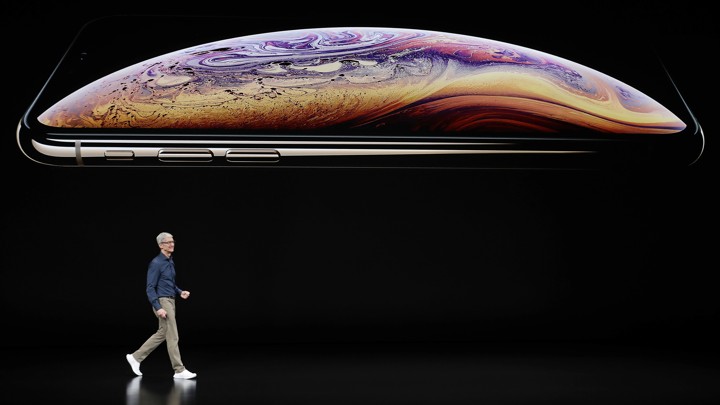 This might not be a new idea, but often it’s not launched unless started in the fall. And the word “big” is awfully deceiving. Yes, it might mean larger scale, a culminating experience or even capstone-like. But it can mean different things to different educators. What if “big” just meant “significant?” And that could simply be that it represents new territory for students. Maybe the students are going to have new experiences, learn new skills or perform in ways they have not done previously. I, and I hope others, will consider that “big” to say the least. It’s time to launch something that both teacher and students have never done before. That will, among other things, produce everything from student engagement to creativity. It’s authentic too. Teachers will be transparent in that they have not done this project before, that they don’t have all the expectations nailed down and that this will clearly extend beyond points, grades and regular school stuff. Teachers can consider engaging new partners, community members and ultimately ways to demonstrate the learning. Feel free to check out ideas such as #20 Time or Genius Hour ( http://www.20time.org/, http://www.20timeineducation.com/), Project-Based Learning (http://www.bie.org/, https://hqpbl.org/. In the end, it will require the students to go further and deeper than they have before. This could be a great way to reboot the mid-year restart. Let’s not wait until summer to implement our “big” ideas.
This might not be a new idea, but often it’s not launched unless started in the fall. And the word “big” is awfully deceiving. Yes, it might mean larger scale, a culminating experience or even capstone-like. But it can mean different things to different educators. What if “big” just meant “significant?” And that could simply be that it represents new territory for students. Maybe the students are going to have new experiences, learn new skills or perform in ways they have not done previously. I, and I hope others, will consider that “big” to say the least. It’s time to launch something that both teacher and students have never done before. That will, among other things, produce everything from student engagement to creativity. It’s authentic too. Teachers will be transparent in that they have not done this project before, that they don’t have all the expectations nailed down and that this will clearly extend beyond points, grades and regular school stuff. Teachers can consider engaging new partners, community members and ultimately ways to demonstrate the learning. Feel free to check out ideas such as #20 Time or Genius Hour ( http://www.20time.org/, http://www.20timeineducation.com/), Project-Based Learning (http://www.bie.org/, https://hqpbl.org/. In the end, it will require the students to go further and deeper than they have before. This could be a great way to reboot the mid-year restart. Let’s not wait until summer to implement our “big” ideas.
It’s December now and we’re focused a lot on finishing strong before our breaks. Facilitators and learners need that winter break. But what will be different in January when we all return? Anything? A new calendar could mean a lot of new things. Let’s not it just be a new number. When students return in January, what is their learning going to look like, feel like and ultimately be like? Mid-year is the perfect time for a whole new year.
In schools, we tend to do similar annual cathartic activities in the summer. Educators typically take the summer to expand their professional skills, make new plans, pilot new technologies or resources - ultimately embark on a reflective journey about making the next school year more creative, engaging and successful.
Here are just a few ways to jump start a new school this mid-year:
Mini SmartStart
More and more teachers, educators and school sites are redesigning their first days of school. They have realized that if one builds culture first, instead of jumping into academics, students’ academic success can actually can actually be accelerated. For those that don’t buy into the idea of “culture eating everything for breakfast” mentality, then they will hopefully get on board one day. For those that do, and have been starting the year off differently each year, what if we pretended that mid-year was a whole new year. Whatever we did at the beginning of the year - relationship building, goal setting, community development, creativity, critical thinking, collaboration - isn’t it probably time to revisit these? Will our second half of the year be different, or even better, if we take the time to try a mid-year Mini SmartStart? Here are some Smart Start Resources.
Lame Duck Days - Intersessions
Redesign the Space
New Year, New Tech
New Year, New Literacies, New Skills
The Big Project

It’s December now and we’re focused a lot on finishing strong before our breaks. Facilitators and learners need that winter break. But what will be different in January when we all return? Anything? A new calendar could mean a lot of new things. Let’s not it just be a new number. When students return in January, what is their learning going to look like, feel like and ultimately be like? Mid-year is the perfect time for a whole new year.
Comments
Post a Comment